The 5 Healthiest (and Tastiest) Oatmeals to Make for Breakfast, According to Nutritionists
The healthiest oatmeals include a nutrient-dense blend of fiber, protein, and fatty acids. But, while nutritious, oatmeal can be... meh. That's why we set out to find oatmeal brands that were not only full of wholesome ingredients, but were also enjoyable to eat—because life is too short to eat bland, gummy oats for breakfast.
- 01Testing method
- 025 best oatmeals
- 03Types of oatmeal
- 04Best preparation methods
- 05FAQs
- Nikki Ostrower, holistic nutritionist and founder of NAO Nutrition
- Serena Poon, CN, celebrity chef, certified nutritionist, and Reiki master
Finding the healthiest oatmeals: our method
To determine which oatmeal is the healthiest and the tastiest on the market, I put dozens of brands to the test. I tasted budget-friendly Trader Joe's and Whole Foods 365 offerings as well as specialty oatmeals from brands like Wildway and Purely Elizabeth—and of course good ol' Quaker and McCann's. To keep the comparisons as fair as possible, all the oatmeals I tested and vetted are the brands' original, unflavored varieties. I cooked all of them on the stove (when possible) as opposed to the microwave.
Once I honed in on the most-delicious (least gruel-like) oatmeal, NAO Nutrition founder and holistic nutritionist Nikki Ostrower, MS, evaluated the ingredients on the labels. The end result? A definitive list of the healthiest oatmeals.
{{post.sponsorText}}
While all the oatmeals and hot cereals on this list are good for you, Ostrower has a few key takeaways to keep in mind. "Nutritionally, it doesn’t matter if it’s steel-cut or rolled, but I try to stay away from the instant, which aren't as nutrient-dense," she says. In general, she chose organic and non-GMO, but you should choose the one you actually like to eat. (Mornings are hard enough as it is.) "The protein and fiber content is pretty similar across the board, so the important thing is to go for one that tastes good so you actually eat it!" she says. After all, those extra superfoods like chia and hemp don't matter if the box is going to sit on your shelf.
Keep scrolling for the five healthiest oatmeals, plus a breakdown of the different types of oatmeals, how to best prepare them, and answers to all your pressing oatmeal FAQs. Grab your bowls—here are the 5 tastiest, most nutritious oatmeals out there.
A ranking of the healthiest oatmeals
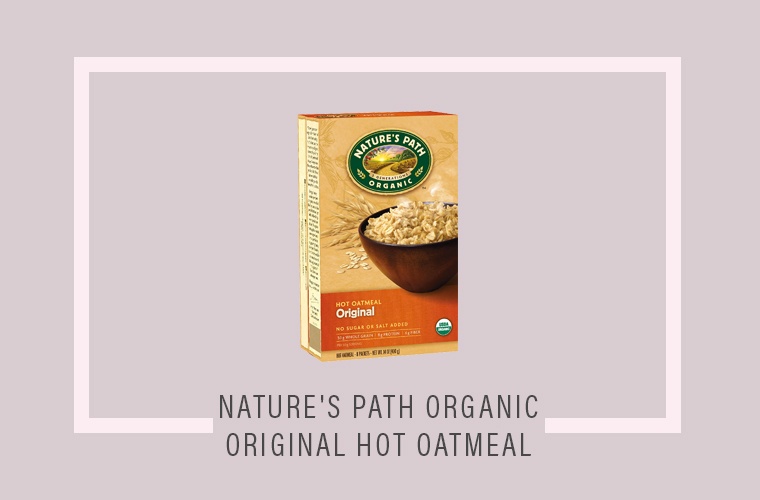
The biggest thing I learned through taste-testing oatmeal is that it’s all about texture—which, unfortunately, is a very personal preference. Some of the brands with superfoods, like chia seeds and hemp, are pretty crunchy. Rolled oats tend to be fluffy in texture, which I (personally) like more than steel-cut oats, which are heartier.
This one from Nature’s Path is made from rolled oats and had the fluffiest texture of any I tried—and I loved it. Ostrower is a big fan too: “Nature’s Path is organic and non-GMO—a big win in my book,” she says. “I always advise looking for organic, because then you can guarantee it’s not sprayed with any herbicides, fungicides, or pesticides, and it’s not genetically engineered.”
The only ingredients listed are organic rolled oats and sea salt—simple, but still pulling in eight grams of protein and six grams of fiber per serving. (The average oatmeal has six grams of protein and five grams of fiber.) Nature’s Path was the clear winner when it came to taste and nutrition, but it’s by no means the only good oatmeal out there.
Pros:
- Great protein and fiber content
- Fluffiest texture of those we tried
- Organic oats
Cons:
- Needs some jazzing up for flavor
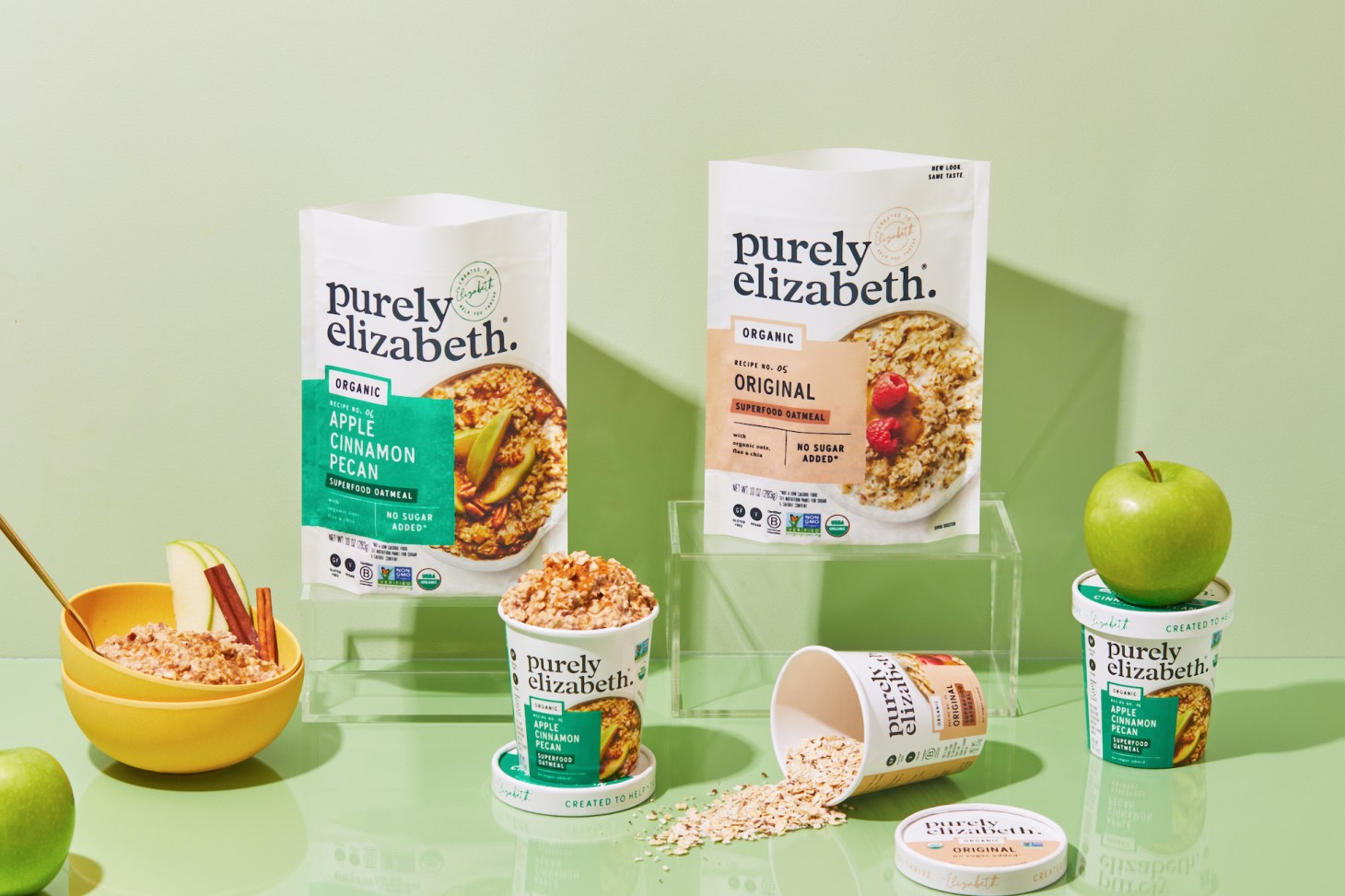
Made with gluten-free oats, flax seeds, quinoa flakes, chia seeds, hemp seeds, and puffed amaranth (all organic), Purely Elizabeth features one of the most nutrient-dense oatmeals on the market. “It’s loaded with protein, heart-healthy fatty acids, fiber, vitamin B6, iron, phosphorus, magnesium, selenium,” our expert rattled off—meaning a lot of health benefits in one bowl.
The flavor profile is more complex than your average oatmeal—the seeds give a satisfying crunch and savory slant, but the texture is still on the fluffy side. Purely Elizabeth’s 6-Grain Ancient Cereal was also part of the taste-test, but it was a bit too grainy. (Plus, Ostrower points out that while the 6-Grain variety is a cereal, it’s not technically an oatmeal.)
Pros:
- Includes nutritious chia seeds, hemp seeds, puffed amaranth and quinoa flakes
- Fluffy consistency
- Organic ingredients
Cons:
- Limited flavor options
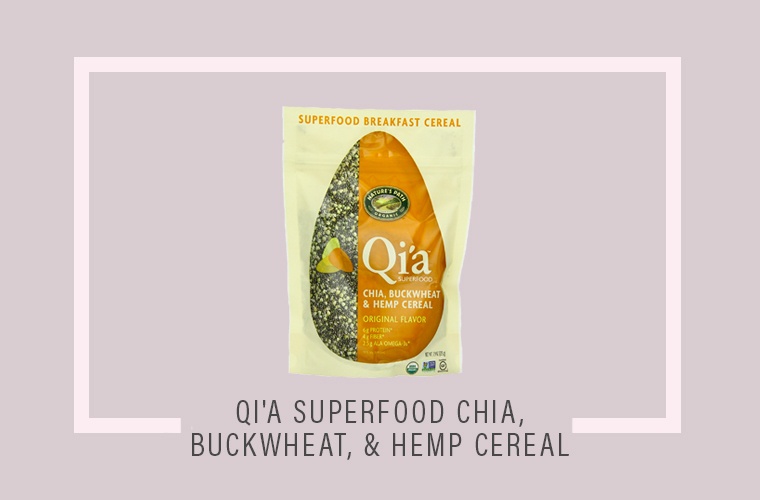
Like the Purely Elizabeth oatmeal, this cereal from Qi’a (a subdivision of Nature’s Path Organic), is loaded with superfood extras.
Real talk: It looks a lot like bird seed. But while the texture is crunchy, the savory blend isn’t too overwhelming. Many oatmeals serve as a bland base for add-ins like fruit and sweeteners, but this one is satisfying all on its own.
While it’s definitely a winning breakfast choice, it slides in at number three for being not as nutrient-dense as the Purely Elizabeth oatmeal or as tasty as the Nature’s Path Organic. Still, Ostrower is a fan. “Again, this one isn’t technically oatmeal, but it has omega-3 fatty acids, which act as a powerful anti-inflammatory and brain food,” she says. “It also has zero sugar and salt, and is gluten-free.”
Pros:
- Contains omega-3 fatty acids
- Zero sugar or salt
- Organic ingredients
Cons:
- Seeds may make this pick too crunchy for some
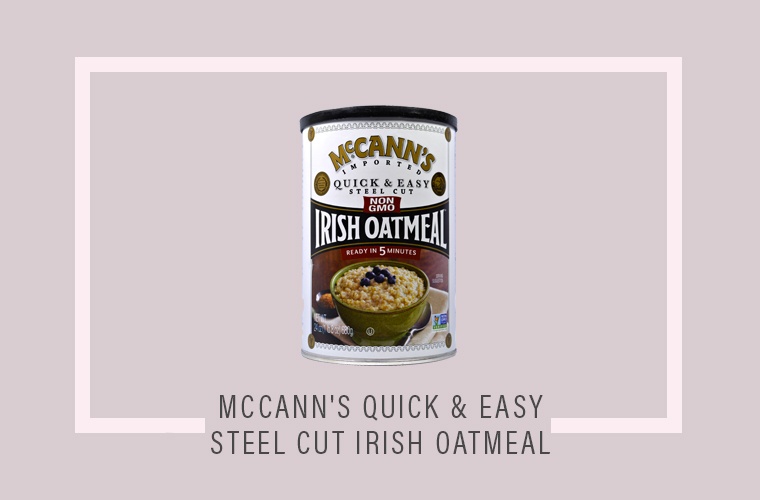
McCann’s is a massive oatmeal brand—you probably grew up with it in your house (and maybe in your grandparents’ kitchen, too)—and for good reason. This is exactly what oatmeal should taste like. Light in texture, it doesn’t have that stuck-in-your-mouth feeling of other oatmeals. And since the only ingredient is rolled oats, it serves as a good base for whatever toppings you’re into.
While it’s non-GMO, it isn’t organic—a major consideration for Ostrower. Also, she isn’t a fan of the “ready in five minutes” thing. “It’s a little more processed, which means the body breaks it down more rapidly,” she says. “For people who have blood sugar issues or are diabetic, they’ll want to go for something slower-cooked.” That rules out “instant” oatmeals, too.
Pros:
- Great texture
- No added ingredients (for the purists out there)
Cons:
- Not organic
- Oats may be too processed for people with blood sugar issues
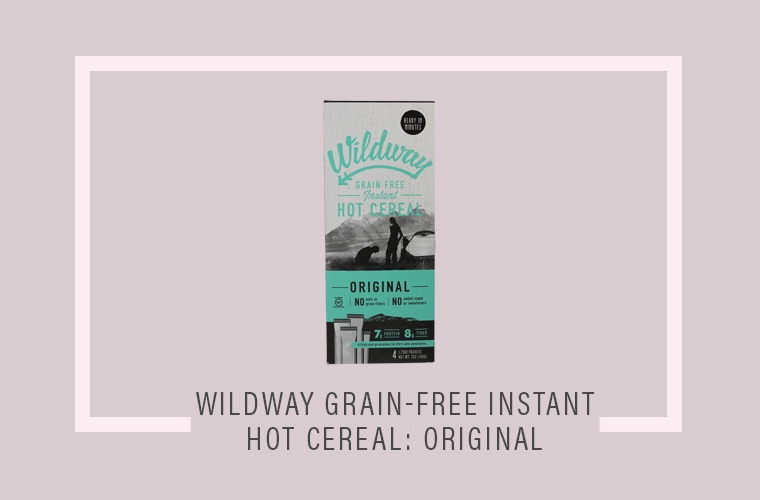
With walnuts, ground flaxseed, cashews, coconut flour, pecans, dried dates, and vanilla bean, this cereal tastes delicious. It’s got some sweetness (thanks to the coconut flour, dates, and vanilla bean), while the cashews make it super-creamy.
Ostrower points out that it has seven grams of protein and eight grams of fiber—more than the average oatmeal. But there is one thing on the label that she takes issue with: the sugar content. “There are five grams in here, while the other brands hardly have any,” she says. That said, this hot cereal is sweet enough that you can skip adding extras like fruit and honey, if that’s your regular habit.
Pros:
- Contains nuts, flaxseed, dried dates, and vanilla bean
- Creamy texture thanks to the cashews
- Doesn’t require added sweeteners
Cons:
- Sugar content is higher than other options
What types of healthy oatmeal (and oats) are there?
Now that you’re up to speed on the healthiest oatmeals out there, below, Serena Poon, a celebrity chef, nutritionist, and reiki master, breaks down the different types of oatmeal (from least to most processed) and how to prepare them.
Oat groats
Oat groats are essentially the basis of all the other types of oats, which means they’re the least processed and most nutritious. “They are oat plants that have been cleaned, hulled, and heated and are a whole grain with the bran, germ, and endosperm,” Poon says. But, because they’re not as processed, she adds that they are the most laborious type of oatmeal to prepare. To do so, she recommends cooking them on the stovetop with boiling water for about 30 minutes.
Steel cut oats
Next you have steel cut oats, also known as Irish oats, which Poon explains are essentially the same as oat groats except they’ve been cut up into smaller pieces. She adds that they have a stronger, chewier texture than rolled oats and take less time to prepare (about 20 minutes on the stove) compared to oat groats.
Scottish oats
Steel cut oats which are then stone ground are called Scottish oats, Poon says. They’re traditionally used to make porridge, she adds, and are prepared the same way as oatmeals and hot cereals on the stovetop for about 10 minutes.
Rolled oats
Rolled oats are perhaps the most popular type of oats you’ll find at the grocery store. Poon explains rolled oats are oat groats that are steamed and flatted, making them quicker to cook. And, compared to other types of oats, they win in the versatility department because you can prepare them in different ways including on the stovetop, as overnight oats, or by adding them to baked goods.
Instant oats
Rolled oats that are partially cooked are considered instant oats. Poon says this allows them to be prepared very easily and quickly by mixing boiling water with the packet of instant oats and stirring until you reach the desired consistency. But, because they are processed they contain less protein and fiber than the other oat options.
Oat bran
Oat bran, Poon says, is not technically a whole grain. It is made from oat groat’s ground up outer casing, and is high in soluble fiber. Because it’s been broken down more than any other oat type, Poon says these are the quickest to cook. In just three minutes, you’ll have a hot, creamy cereal ready to eat.
The best oat types to use by preparation method
Overnight oats
If you’re an overnight oats enthusiast (first of all, same), Poon says rolled oats are the best oat type to use. “These oats absorb the liquid well and will expand into a soft and creamy meal overnight,” she says. “Add rolled oats to a jar, pour nut milk overtop, and then sprinkle in spices such as cinnamon or cardamom.” She adds that you can also use instant oats to make overnight oats. However, they offer less nutritional value and the consistency may not be ideal. So rolled oats are your best bet.
Porridge
If you’re more of a porridge type of person, which Poon describes is basically a creamier version of oatmeal, then Scottish oats is the way to go as that is what is traditionally used to make porridge.
Traditional oatmeal
Like to stick to the basics? Steel cut oats are Poon’s preferred oat for a traditional bowl of oatmeal. “They are highly nutritious, but do not take as long to prepare as oat groats,” she says. “Steel cut oats also provide a more rigid texture than rolled oats.”
Baking
In addition to making baked oats (we have plenty of recipes to try) you can use oats in baking, too. “This adds not only texture and flavor, but also the health benefits that come along with using the whole grain,” Poon says. For this preparation method, she recommends swapping some flour for rolled oats in recipes.
Frequently asked questions about oatmeal
Is organic oatmeal better than regular oatmeal?
Like Ostrower mentioned earlier, opting for organic oatmeal ensures that the oats are not sprayed with pesticides or herbicides. “Glyphosate is a commonly used herbicide on oat plants,” Poon says. “This herbicide is labeled probably carcinogenic1 by the World Health Organization—though the EPA says there is no risk of concern to human health—and also may impact your microbiome and antibiotic resistance.” So, yes organic oatmeal is definitely the better choice.
Are raw oats more nutritious than cooked oatmeal?
Although you can technically eat raw oats, Poon doesn’t recommend it. “They are difficult on the digestive system and may cause issues,” she says. “Raw oats also contain phytic acid, which can interfere with the absorption of some nutrients.” By cooking or soaking the oats, you’re eliminating these potential consequences.
Is packaged oatmeal healthy?
The short answer is yes, packaged oatmeals can be healthy (see our top five healthiest oatmeals above). However, Poon notes that not all packaged oatmeals are created equal. Be wary of sugar content. “Many packaged oatmeal options are pre-sweetened,” she says. “Eating a diet that is high in added sugar can lead to inflammation, cognitive disorders, and chronic disease, so it’s best to limit sugar as much as possible.”
Do organic oats taste different from ordinary oats?
It depends. “Some people do have sensitive enough palates that they can taste a slight chemical aftertaste in conventional products,” Poon says. “Oats that are certified organic often mean that they were harvested and processed with greater care than a conventional product, which lends to increased quality and flavor.”
What can I do/add to make oatmeal less bland tasting?
The good news is there are tons of ingredients you can put in oatmeal to jazz it up. Think of oatmeal as a blank canvas. In particular, Poon recommends playing with overnight oats. Adding nut milk (opt for one without sugar or additives) gives the oatmeal a rich and nutty flavor, she says. Then you can get creative with toppings such as nuts and berries, both which add flavor and nutritional value. And if you need extra sweetness, Poon suggests adding a small amount of maple syrup, honey, or agave.
How can I improve the taste of oatmeal and keep it healthy?
To keep your oatmeal healthy, Poon says the most important things are to opt for oatmeal types that are organic and least processed and don’t contain any sugar, artificial flavors, or additives. Once you’ve got that down, you can pretty much add whatever toppings suit your fancy. For instance, if you don’t have a sweet tooth, Poon says you can experiment with savory versions of oatmeal toppings such as sea salt, eggs, avocados, and vegetables.
- Van Bruggen, A H C et al. “Environmental and health effects of the herbicide glyphosate.” The Science of the total environment vol. 616-617 (2018): 255-268. doi:10.1016/j.scitotenv.2017.10.309
Loading More Posts...